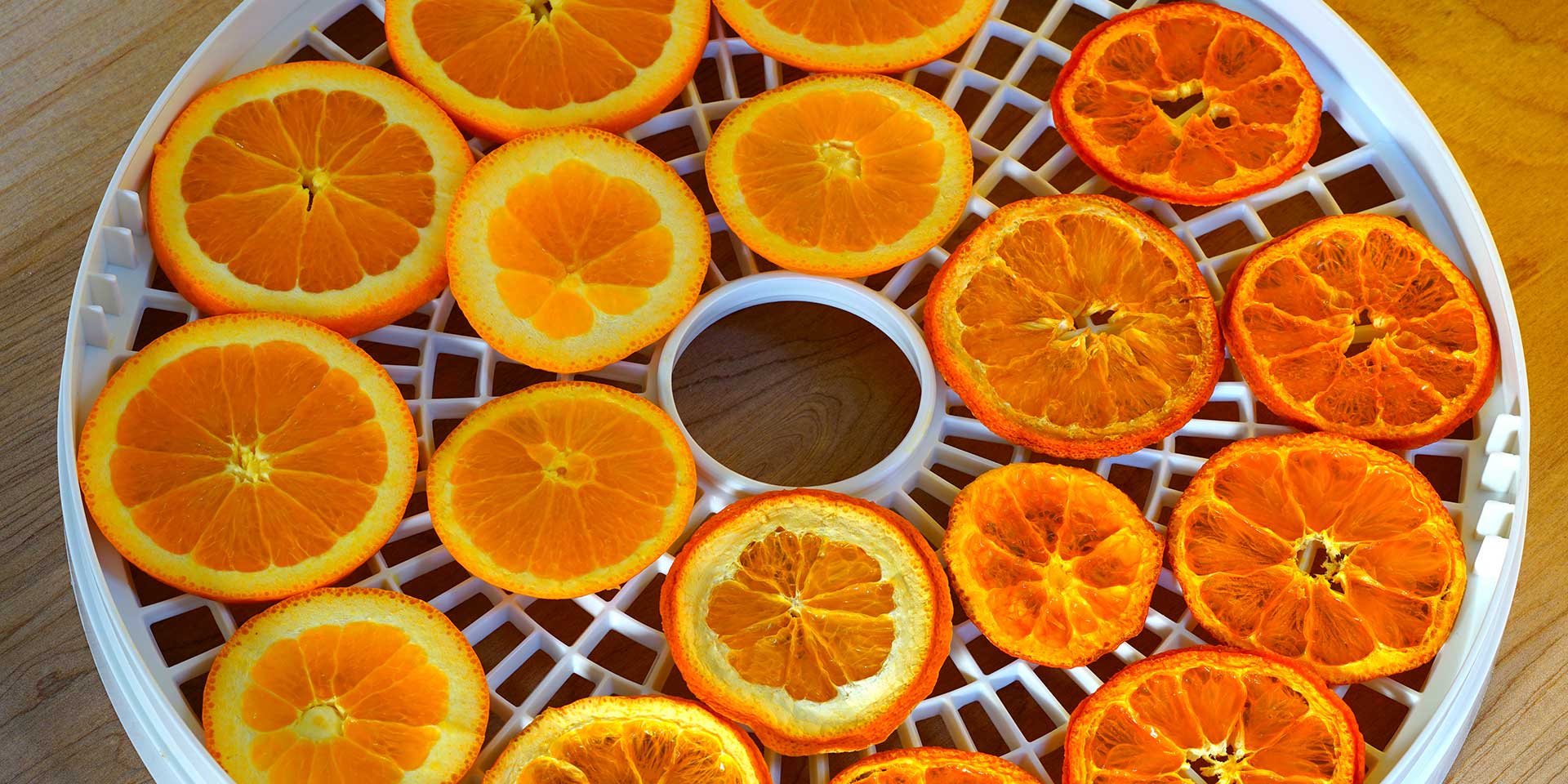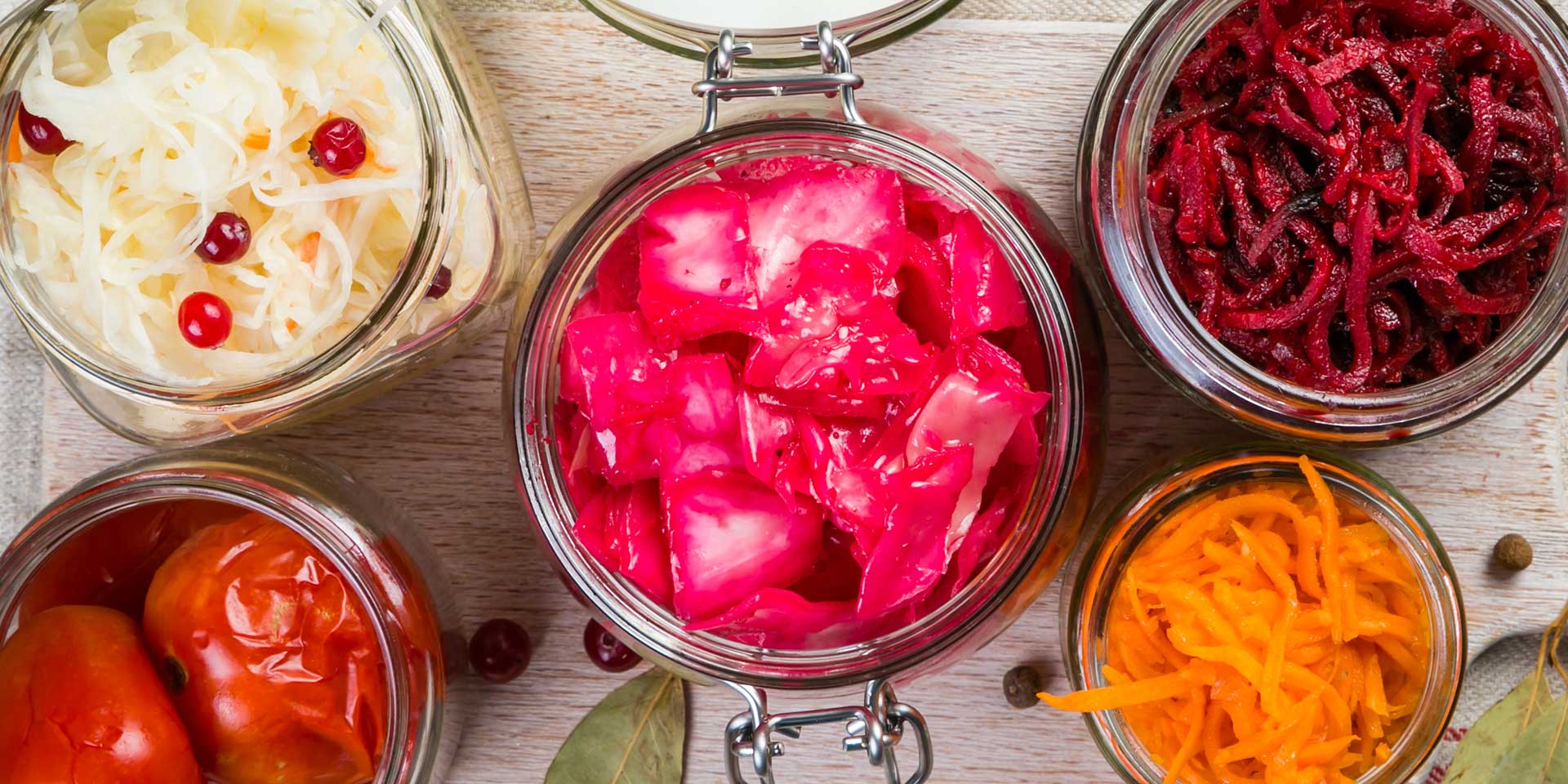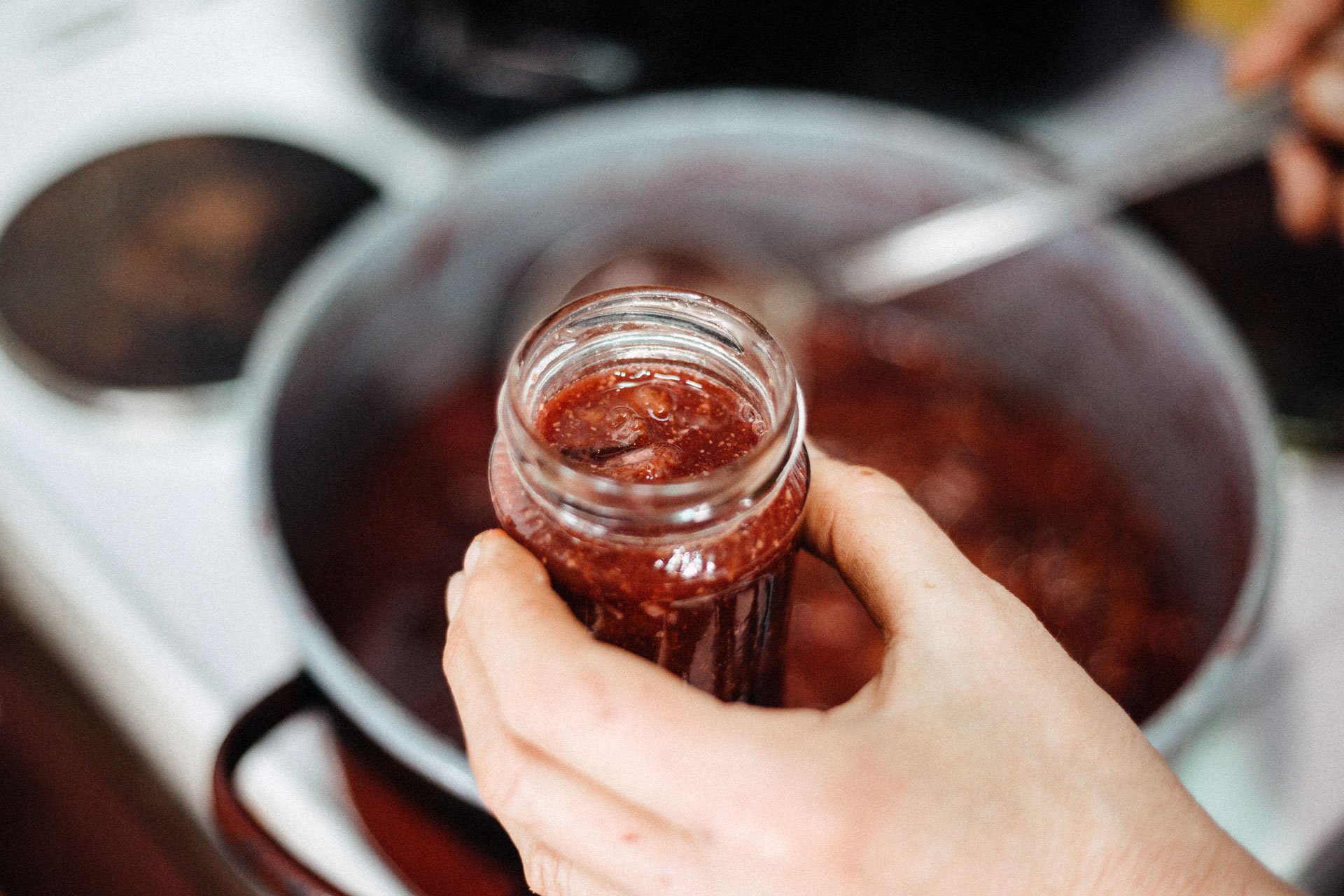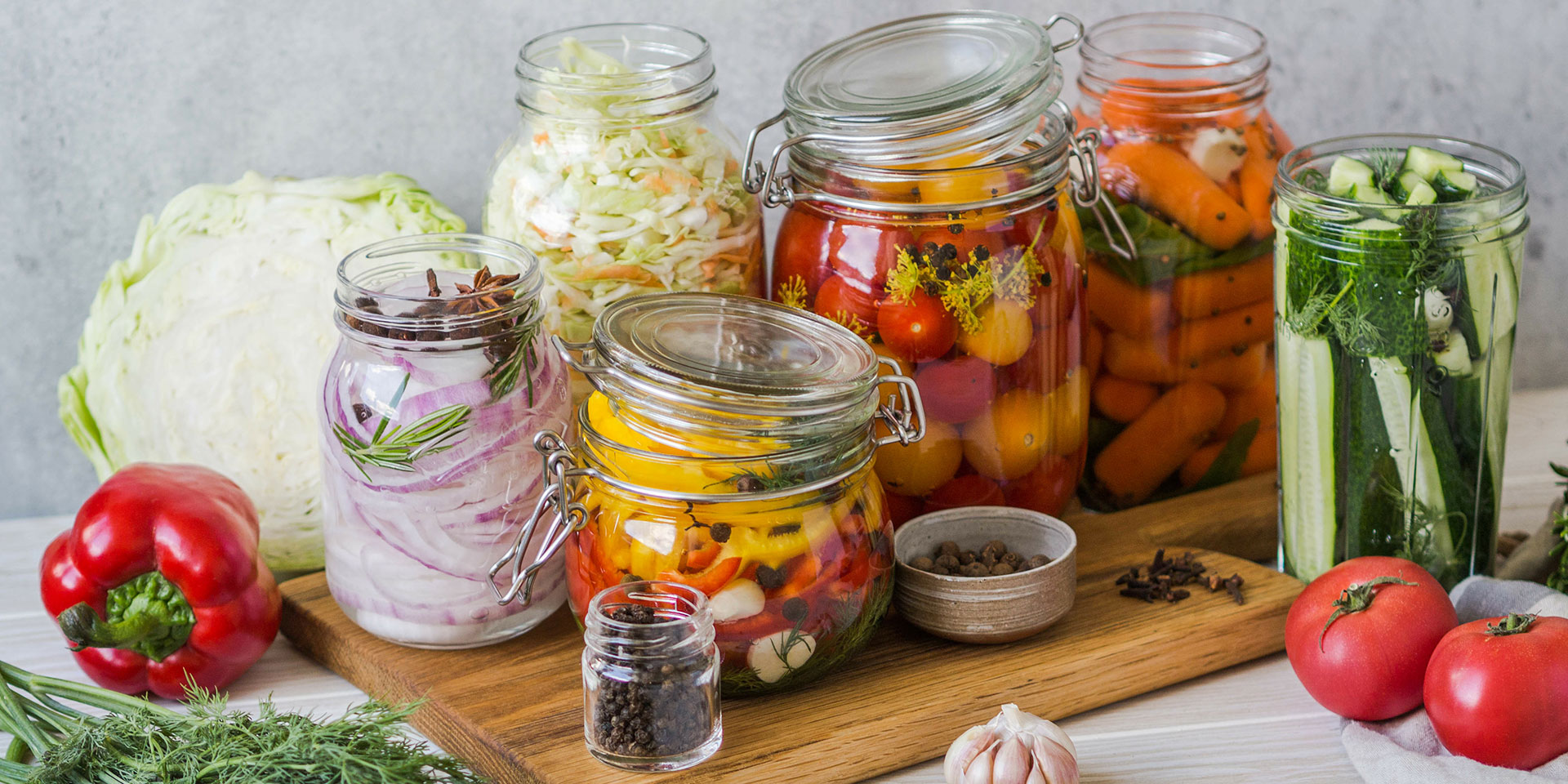Get creative with these food preservation methods
It could be argued that the world’s cuisines owe a lot to the long history of food preservation — the ingenious and unexpected ways to prolong the lifespan of food that have allowed humans not only to feed themselves year-round, but also to experiment with recipes, expand their palates and find new flavors.
With the dawn of home appliances and shelf-stable packaged goods, some of these millennia-old methods have lost their urgency. Still, preserving can be a crucial tool to help prevent food waste, prolonging ingredients’ lifespan beyond what simple refrigeration will allow while saving the bounty of a CSA, a backyard tree or a garden haul for future meals — or giving new life to scraps like rinds and stems. A preservation project can also be about more than just the food: a way to spend time in the kitchen, to intentionally incorporate sustainable cooking into your lifestyle or to pass down generational knowledge. That there are so many ways to do it is icing on the cake.
We’ve got a rundown of the most common at-home food preservation methods — whether you’ve got two hours or two days, for lovers of involved recipes and kitchen gadgets or cooks who just want to keep it simple. Keep reading for all the preservation inspiration you need.
Candying
This is the method for when you want to preserve to impress. While candying can be quite time-consuming (some recipes will require several days, though of course you won’t actually be working for the majority of those hours) the high-effort, high-reward technique produces luminous confections that make any cheese platter or holiday pastry shine.
What is it? This ancient food preservation method prevents spoilage by replacing an ingredient’s water contents with sugar — a process that can also transform scraps and discards, like citrus rinds, wrinkled ginger or bruised fruit, into something quite special.
How should I use it? Popular candying candidates include cherries, pineapple, papaya, figs and citron (or other citrus), but feel free to get creative. Some confectioners infuse their candying syrup with botanicals, like bay leaves, rosemary or peppercorns, for added intrigue. Candied items can be stored in syrup or thoroughly dried and kept in an airtight container.
Canning
It’s not just cottagecore: “Putting up” produce is a time-honored food preservation method to keep fruits and vegetables shelf-stable. There are two main canning methods: pressure canning, which requires specialized equipment, and water bath canning, which can be done with a standard stockpot and a Mason jar. The latter approach, also known as “hot water canning,” is the more accessible option for many home cooks.
What is it? The name “water bath canning” refers to a crucial part of the process: submerging lidded jars in a bath of boiling water. The heat will neutralize the enzymes in the food that relate to decay, kill many bacteria and other microorganisms and create a vacuum that further prevents growth.
How should I use it? A crucial detail: Certain foods, including meat, dairy, grains and certain types of vegetables, should not be canned with a water bath. Water bath canning is used exclusively for acidic foods, which create an environment that is inhospitable to Clostridium botulinum (the cause of botulism). Common foods include pickles, jams, whole fruits and tomatoes or tomato sauce, always with added acid. It’s important to follow recipes exactly: Boiling times are carefully calculated to ensure thorough heating, and pH levels must remain below a certain threshold to be safe.
Dehydrating
Drying food once looked like leaving it out in the sun or wind. Thanks to modern technology, you can achieve much the same effect without building a backyard drying rack: An oven or specialized countertop machine can generally dehydrate food in less than 12 hours, and all you have to do is slice your ingredient evenly, spread it all out in a single layer and press a button.
What is it? Dehydrators remove water by exposing ingredients to low heat while keeping air circulating throughout, much like a convection oven but at a temperature that doesn’t actually cook them. You can also use a standard oven on the lowest possible setting and crack the door for better airflow. Without moisture, bacteria cannot grow (though exposure to humid air can reintroduce water over time).
How should I use it? Beginners can start with sliced fruits, great for snacking and baking, or vegetables (for stews and braises) and bunches of herbs (for the spice cabinet). Level up with more involved recipes like flavored jerkies or fruit leathers. The dehydrator is your oyster — though dehydrated oysters might not be ideal.
Fermenting
You know it when you taste it: funky, sour, salty, savory. Humans have been fermenting since at least the Neolithic age, harnessing the power of microorganisms (sometimes introduced, but often naturally occurring in or on our food) to make it last longer and change both texture and flavor. These microorganisms aren’t harmful — on the contrary, they’re often quite good for us.
What is it? Fermenting encompasses a range of processes through which microorganisms — yeasts, molds, bacteria — break down compounds in food to create alcohols, acids or alkalis, which in turn prevent the growth of harmful pathogens. With produce, it’s often lacto-fermentation afoot: Salt is added to kill the bacteria we don’t want, and Lactobacillus survives to convert the sugars present into lactic acid.
How should I use it? Ferments are among the most famous of all preserved preparations: kimchi, sauerkraut, miso, vinegars, fish sauces. But you can apply the method to all sorts of odds and ends, making kraut from kale scraps or hot sauce from overripe chiles. Fermented foods will last longer than fresh, but should be stored in the refrigerator.
Freezing
Yes, freezing counts! It’s one of the simplest preservation methods we have, but that doesn’t mean you can’t be thoughtful about it. How you freeze — and what you freeze, and how you prep it — will make a noticeable difference in how frozen food will act once it emerges from the cold.
What is it? Cold temperatures halt decay by slowing enzymes and preventing the movement and growth of microorganisms. Cold temperatures also cause water to crystallize — and those crystals, which can puncture cell walls, cause emulsions to separate or wreak other molecular havoc, are the reason so many foods seem a little different after defrosting. Learning how to minimize the damage can be useful.
How should I use it? With the right preparation and packaging, you can freeze almost anything, though some ingredients are notably more successful than others. Read our guide to learn what foods freeze best, and how you can freeze strategically to minimize common woes, like freezer burn — plus a few recipe ideas for using your freezer creatively, like onion “shaved ice” and one-ingredient banana ice cream.
Jam-making
Jams, jellies and marmalades are a classic way to preserve summer fruits or turn a bounty of sour winter citrus into something sweet. Professionals and passionate cooks will often do this in large batches, carefully measuring and canning to ensure everything is shelf-stable. So-called refrigerator jams, on the other hand, require a little less finesse; they’re generally made in small batches to be eaten within a few weeks, making them a great place for novices to start.
What is it? When making jam, fruit is preserved by cooking it with sugar, which slows microbial growth, as does the acid that’s often naturally present. The process also activates pectin, an acidic polysaccharide present in many fruits that sets the jam into a spreadable gel. If you’re not canning, refrigeration is necessary.
How should I use it? Refrigerator jams typically skip added pectin — many recipes call for just fruit and sugar, and sometimes an acid like lemon juice — so they’re best for fruits that are already rich with it, such as apples, pears, blackberries or cranberries.
Pickling
Pickled cucumbers are so popular in the U.S. that we know them simply as “pickles.” But there’s almost no end to the pickling options. Just like with jams, some people will put up dozens of jars at a time using a precise recipe and careful canning — and just like with jams, you don’t always need to do all that. Refrigerator pickles (also known as “quick pickles”) can come together in half an hour and last around a month.
What is it? As is the case with some lacto-fermented preparations, pickles are preserved with acid — in this case, acetic acid from vinegar. The brine is usually an even-ish ratio of vinegar and water, plus varying amounts of sugar, salt and flavorings. Many recipes will have you boil the brine first, which draws out the flavor of added spices and helps the produce absorb it more quickly.
How should I use it? This method works best with vegetables that are very fresh so you maintain that classic crunch. Pickled onions, peppers and cucumbers (of course) are typical on burgers and sandwiches; julienned carrots and daikon are a must for banh mi, and thinly sliced radishes or cabbage can add crunch to tacos. Larger veggies, like blanched green beans or cauliflower florets, make for a great pickle-y snack. Fruits can pickle, too!
And more…
There are plenty of other ways to expand your food preservation toolkit. Try hanging up herbs to dry or making a chile ristra or garlic braid. Many animal proteins are traditionally preserved by smoking or curing in sugar, salt or both (usually the case for bacon or gravlax). Something you’ll see somewhat less in the U.S. is curing with lye, the method behind lutefisk and century eggs. Ever heard of duck confit? This technique, which comes from the French word for “preserved,” involves cooking and storing an ingredient in fat to keep oxygen out; it was historically used for meat, but also works great with vegetables.
Check out the National Center for Home Food Preservation for safety guidelines and more ideas.
Get the latest food news, from FoodPrint.
By subscribing to communications from FoodPrint, you are agreeing to receive emails from us. We promise not to email you too often or sell your information.
Top photo by galyna0404/Adobe Stock.
More Reading
15+ ideas for delicious meatless grilling
July 1, 2025
4 Tips for Stretching Your Food Dollars
April 16, 2025
How to use extra onions
April 9, 2025
Our latest podcast episode on pistachios: The making of a food trend
April 1, 2025
This vegan tiramisu will bring you joy
March 11, 2025
For lessons in thrifty, climate-friendly cooking, look to vintage cookbooks
March 10, 2025
Americans love olive oil. Why doesn't the U.S. produce more of it?
February 28, 2025
How to fight household food waste? Join our Eat Down Your Pantry Challenge!
February 13, 2025
During a period of egg chaos, egg replacements for (almost) any situation
February 7, 2025
Ways to go meatless — or less-meat — in January
January 15, 2025







